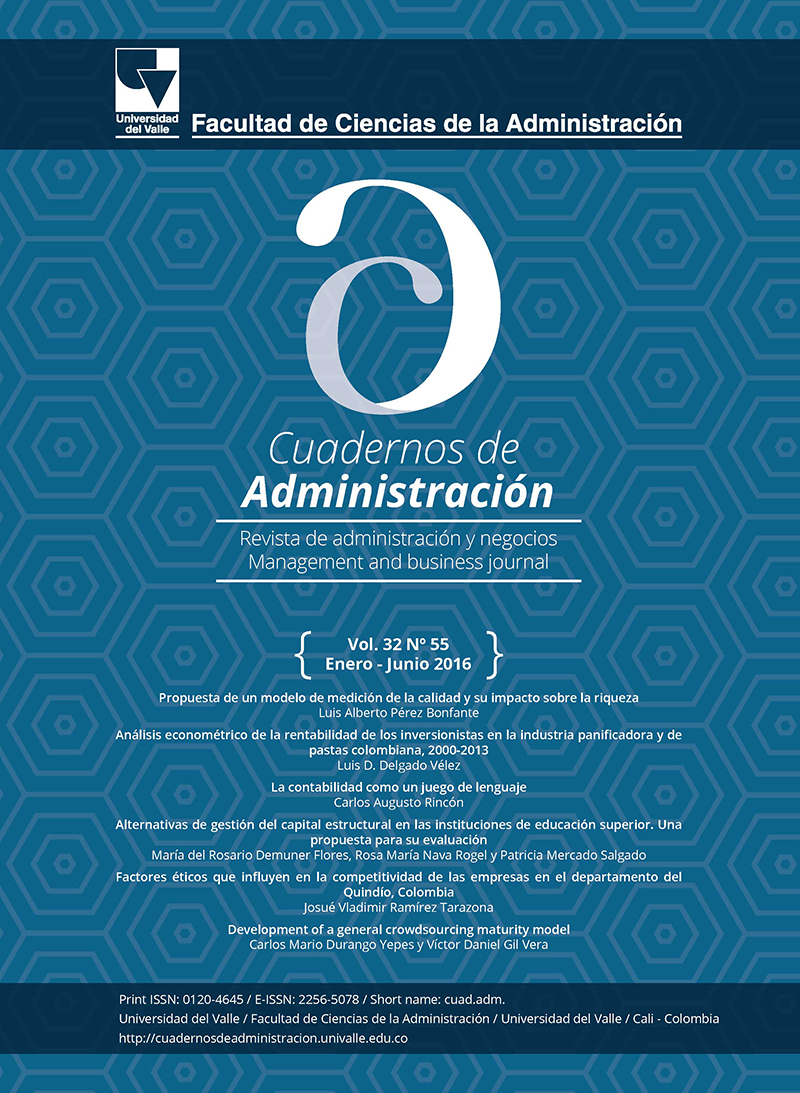Econometric analysis of the profitability of investors in the bakery and pasta Colombian industry, 2000-2013
Keywords:
competitiveness, financial analysis, financial econometrics, bakery and pasta industry, profitability.Main Article Content
The bakery and pasta industry in Colombia represents one of the most important activities in the manufacturing sector, with sales of nearly 2.5 trillion pesos, annually. However, some critical factors such as the prices of raw materials in international markets, cultural aspects, the arrival of strong multinational competitors and the adversities own of the domestic industry potentiate risks to their investors. The return on equity (ROE) shows a progressive reduction going from 14.1% in 2000 to 4.4% in 2013; in addition, the linear regression model confirms this behavior, largely explained by changes in gross margin and profitability of their assets. On the other hand, an increase in selling prices adjusted for inflation and a substantial reduction in per capita bread consumption in the last 13 years, from 32 to 24 kilograms per inhabitant-year indicate a poor revenue performance and a poor use of its fixed assets. However, the behavior of the costs of raw materials and labor allows us to infer that employers were able to control production costs, despite the volatility of wheat’s international prices.
Econometric analysis of the profitability of investors in the bakery and pasta Colombian industry, 2000-2013. (2016). Cuadernos De Administración, 32(55), 19-32. https://doi.org/10.25100/cdea.v32i55.4255

